Consumption and Enjoyment of Performance Videos
- Second Podcast about Video Production of the Performing Arts -
KIM Soohyun
Senior Reporter
Government Policy & Culture Department, SBS
KAMS has invited experts and freely discussed video production of the performing arts, which has recently accelerated with the coronavirus pandemic. KAMS shared five podcasts of this special series inviting experts every Wednesday, starting from August 5, 2020. But there wasn’t any English version of the podcasts. Therefore, with this article, KAMS is consecutively uploading summaries of each podcast. It would be something to look forward to.
Special Podcast Series about Video Production of the Performing Arts
1. Performance Videos in the Era of COVID-19 [link]
2. Consumption and Enjoyment of Performance Videos
3. Production of Performance Videos [link]
4. Intellectual Property Rights of Performance Videos (to be uploaded on November 4)
5. Performance Videos as a New Genre (to be uploaded on November 4)
Korea Arts Management Service and SBS collaborated for the special podcast series about video production of the performing arts. The second podcast of the series was about ‘consumption and enjoyment of performance videos.’ It is true that people have actively discussed performance videos since the onset of the coronavirus pandemic. However, most of the discussions were focused on ‘producers.’ So on the occasion of this podcast, we talked about performance videos from consumers’ perspective and dealt with themes such as ‘onlineperformance platforms’, ‘distribution’ and ‘market’.
Ahram Gwak (producer/Team Leader of Programming & Production Team, Korea National Contemporary Dance Company (KNCDC)), Jake Kim (CEO/director of All That Planning Co.,Ltd.), Sekyu Kim (professional of Media Service Team 1 at LG U+)and Sophy Jiwon Kim (VP/producer of EMK Musical Company Co.,Ltd. and president/CEO of EMK International Co.,Ltd.) served as panelists. As a moderator, I added my stories from the point of view of a ‘consumer’ who had watched numerous performance videos. (The content and order of the remarks have been rearranged concisely to ensure a natural flow of the article.)
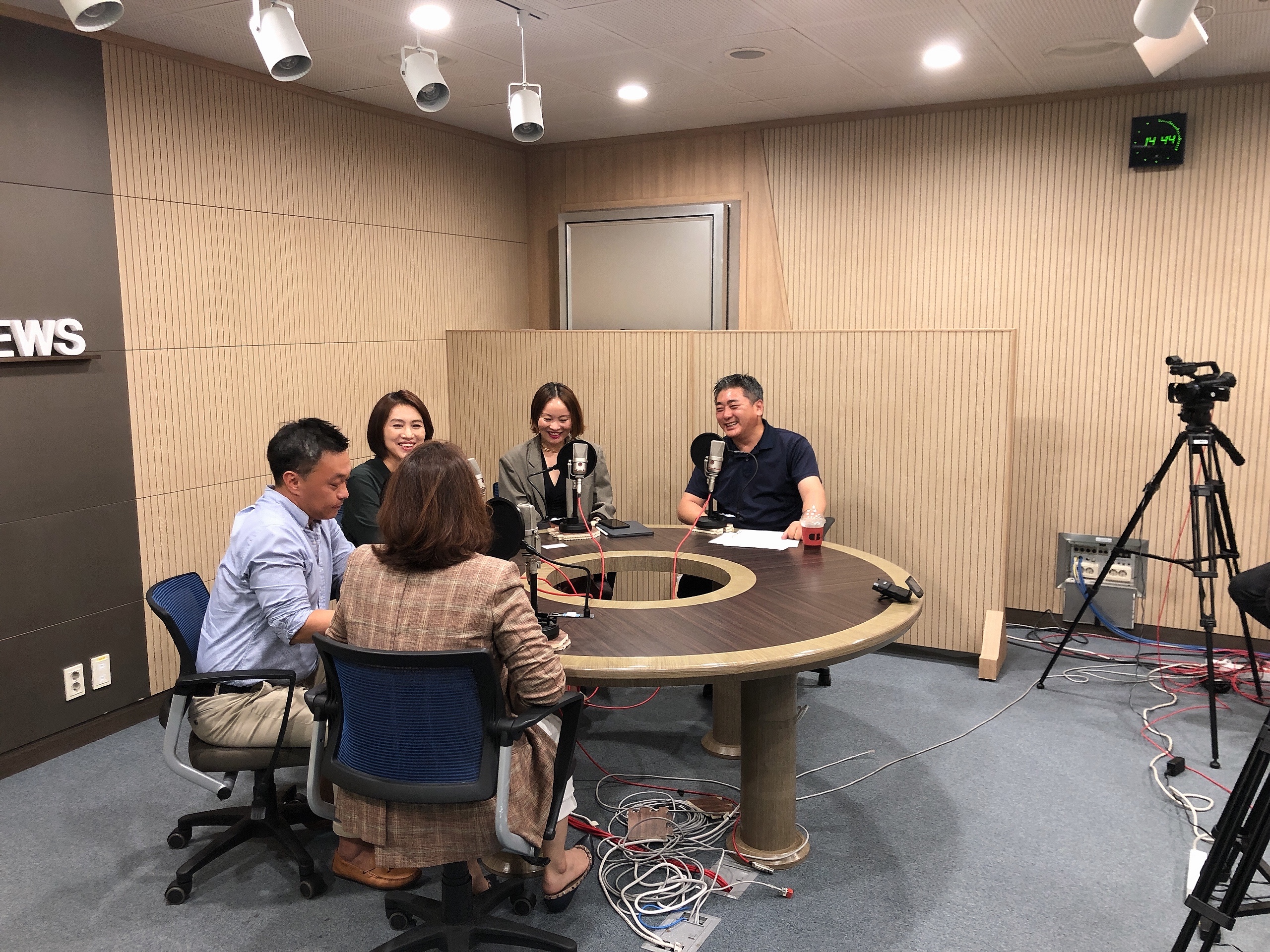
Second Podcast about Video Production of the Performing Arts ©KAMS
What is the Performance Video That Consumers Want?
Since the outbreak of COVID-19, many Korean performing arts companies have shared their existing performances online. Or, they have performed without audiences and shared the performance online, which could be in real time or not. Producers who had become unable to present offline performances came up with this emergency measure. Although such videos were shared for consumers who couldn’t watch performances, the videos that lack dynamism and vitality failed to persuade consumers to watch them.
International companies that had presented paid online performances before the pandemic actually add different devices to make the performances feel like live ones. For example, they show a panoramic view of their theater at the beginning and greet the audience. During the intermission, they interview the cast. At the end of the performance, they provide a curtain call-like video. In contrast, most of Korea’s online live performances don’t have such tweaks at all. A performance starts suddenly without any prior announcement. After the performance, the performers are not sure where to look at to greet the audience. After an awkward silence, they go to blackout all of a certain. Now is the time to stop such an unnatural live performance.
Jake Kim/ Watching a performance is ‘contextual’consumption. The consumption of a performance encompasses the moment a person wants to watch a performance, the process of choosing what to watch when, the route from home to the theater, the feeling of arriving at the theater, the air they feel during the intermission, the echo of the performance after its endand the landscape they see outside their car window on their way home and their memories of the performance itself. These elements overlap with each other. When producers present online performances, they need to make efforts to provide such a context of consuming a performance. Examples of such efforts are international companies showing their rehearsals and backstage interviews. Additional videos in DVDs play the same role.
Soohyun KIM/It is true that well-made performance videos are great. But there are also great videos that show something the audience have never seen before. A case in point is a YouTube video posted onthe World Piano Day. In the video, international pianists including Seong-Jin Cho take turns to play the piano at home. While enjoying the video, I felt as if I were invited to their house. The books in their house also aroused my curiosity and the fire place in their living room felt cozy.
Ahram Gwak/At the beginning of the spread of the coronavirus, we shared a video in which each member of Korea National Contemporary Dance Company dances alone at home. The audience responded to the video enthusiastically, which was quite unexpected. It seems that people are interested in what artists do in their daily lives. As we shared our live performance online, we reviewed the audience’s answers to our question about what content they wanted to see. Many of them wanted to see how a dance performance is choreographed.
Sophy Jiwon Kim/As the CEO of EMK International, I also serve as the K-theater programming director of an American performing arts video platform called Broadway On Demand. This platform screened "Excalibur", a musical produced by EMK. The performance started at 8 p.m. and there was a preliminary program called “Free Red Carpet Show” at 7 p.m. This program has a kind of boosting effect for those who go online before 8 p.m. so that they can enjoy the performance even more. During the program, they show interviews with the author or the cast and give some tips on how to enjoy the performance better. They also encourage the audience to imitate what the characters do during the performance. Such content was loved by many people.
Performance Video Platform …Naver? YouTube? IPTV?
As for the platform of performance videos, Naver TV and YouTube have been used more than any other platform in Korea. On Naver TV, a full-length video of the 2016 musical "Fan Letter" attracted so many people, leading to the increase of theater-goers. Consequently, many production companies have used Naver TV to promote their performances. Since the onset of the pandemic, the number of live streamed shows has increased four times. Performing arts companies have also used YouTube to post their promotional videos. Since the beginning of the pandemic, they have also used it as a live streaming platform. In Korea, NaverTV is for domestic use but YouTube has greater accessibility abroad.
Ahram Gwak/Korea National Contemporary Dance Company presented the performance that had been scheduled for April on both YouTube and NaverTV. The number of those who watched the video was seven times bigger than that of the offline performance. But their average view duration wasn’t very long. Loyal viewers were mostly found on YouTube. The number of those who watch our performance on YouTube is close to that of the audience at the theater. On the other hand, NaverTV had a great effect of sharing contemporary dance with a big number of users watching such a performance for the first time. Many ofthem responded like, "That’s a first.” or “It’s amazing.” In the case of online streaming, the audience often chat. This could be distracting for those watching the performance but it also has a positive effect because producers and choreographers can communicate with the audience in real time.
Subscription-based IPTV is also a platform for online performances. Since 2016, LG U+ has secured performance videos with a strategy of differentiating and diversifying its content. Members of IPTV can watch these performances for free. Most of the performances are international classical concerts like those from the Salzburg Festival.There are also international ballet and dance performances that have been invited to LG Arts Center. Since the onset of the pandemic, LG U+ has also shared an increasing number of Korean performances. Many of the online performances are presented through live streaming but IPTV’s performances are provided through VOD.
Sekyu Kim/One of our IPTV team members said, “Watching a real-time TV series, I unconsciously pressed the fast forward button.” This happened because Koreans are used to the ‘on demand’ user interface. We must not forget that viewers have already changed like that. Just the venue of performances physically moved from the theater to the screen. I still find myself acting as a supplier of a streaming service. We need to think about how to satisfy the viewers who want to watch videos when they want in the way they want.
When we make a performance video, it is not the same performance anymore but it turns into ‘video content’ which can be distributed through different channels. So it is necessary to analyze consumers’ behavior on each platform in order to decide how to distribute the videos (streaming or VOD) and what channel to use.
What is the Meaning of the Number of Views for Online Performances?
The result of an online performance is measured with the number of ‘views’ which could be tens of thousands or hundreds of thousands. However, could we compare the number of views of an online performance to that of those watching an offline performance? Even if you click on the performance and stop watching it shortly, you are counted as a viewer. If most viewers don’t stick around, only some of the viewers actually “watch” the performance. If that’s the case, how should we interpret the number of views?
Jake Kim/The big number of views and short view duration wouldn’t necessarily be something negative. The big number of views means that we have those who are willing to choose our performance, in other words, potential consumers. The short view duration may mean that we are not meeting such potential consumers’ real needs. So we should think about what improvements to make.
Sekyu Kim/It would not be easy for consumers to watch af ull-length online performance on their smartphone. They don’t watch TV in a comfortable couch in the living room but they hold a mobile device to watch a performance. That could shorten their view duration. In the case of LG U+’s VOD service, people tend to keep watching performance videos longer than when they watch films and documentaries. That would be because performances have loyal audiences.
Are You Preparing Instant Noodles during an Online Performance?
Jake Kim/But viewers tend to stay focused on films so if they have something that needs to be done, they press the pause button and watch it again later. In contrast, they don’t really concentrate on performances. So wouldn’t they be doing something else during an online performance? For example, they could prepare instant noodles or go to the bath room.
Soohyun KIM/As a viewer, I agree to a certain point. When I watch a performance on IPTV, if the performance has a certain story, I stop the video when I need to do something else for a moment and come back to follow the story…
Jake Kim/That would be because we often hear background music.If Seong-Jin Cho is in the video, viewers would concentrate on every touch. But if scenes are not closely connected to music to arouse interest, people would do the dishes while listening to music.
Ahram Gwak/As for contemporary dance, even if you prepare and eat instant noodles and come back, nothing special happens on the screen.(Everyone laughs.) Many of the dance performances don’t have concrete stories. And considering the characteristics of the genre, it would take some time to attract the general public.
As were view the trends of viewing performance videos provided by LG U+’s IPTV, it becomes evident that genres with specific stories are relatively appropriate tobe watched as a video. Considering the total number of views, most of thevideos watched online are classical music concerts with abundant international content. Nevertheless, the number of views for each show is higher in the case of musicals, plays and operas.
Fun? Function?... Why People Choose to Consume Online Performances
Jake Kim/Cultural content should be able to provide consumers with at least one of these two factors: fun and function. When it comes to a pure dance video, some people may want to watch it because they are interested in the video (fun) but students who decided to major in dance maywant to watch it to learn from it (function). So far, most performance videos have had a completed structure of the entire work. Now, we need to process such content so that it can provide specific functions for a certain group of people.If we don’t suggest the reason why consumers need to invest their time, a video cannot be chosen by them, whether it be paid or free.
Just like Korea National Contemporary Dance Company’s members dancing alone in the video, we need to try a variety of videos in addition to the original performances. Mr. Jake Kim said that dance is a genre with great potential for video production. Dance is non-verbal, which means it can overcome language barriers easily. Dance has also made diverse attempts in collaboration with other genres or technologies. In particular, dance videos began to be made early on. A good example of this is ‘dance film’ which is based on the performing arts but produced with the cinematic grammar.
Classical music is a genre whose competition is already fierce, due to the huge number of world-renowned concert videos. So as for this genre, it is important to explain why viewers should choose a specific video among the innumerable concerts. In other words, it is necessary to clearly suggest one of the two factors: fun or function. For those who don’t have any specific ‘taste’ for performances or for those who don’t know how toenjoy the shows, we would also need to produce video content that is educational and ‘functional,’ to serve as a commentator for the performing arts.
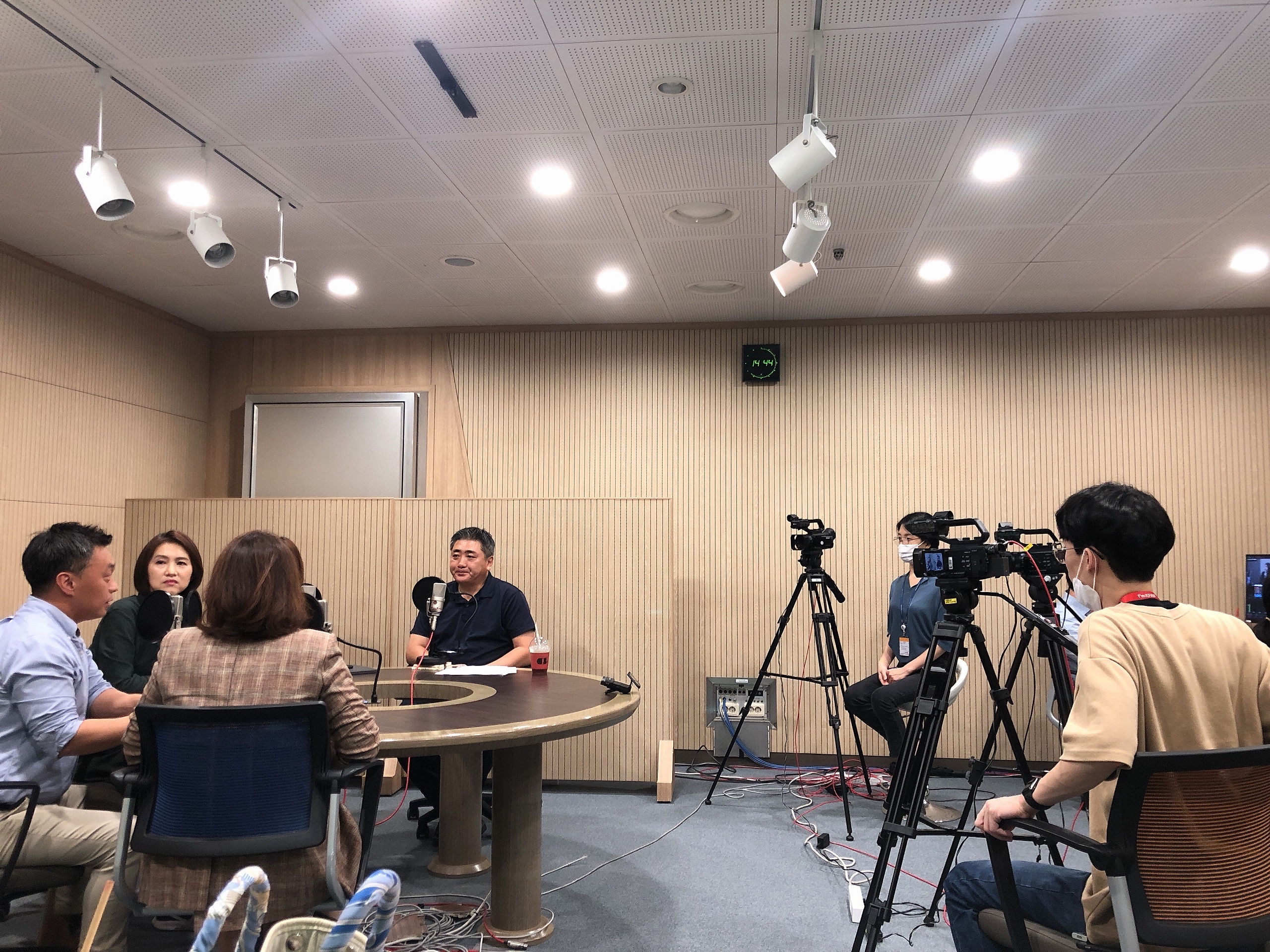
Second Podcast about Video Production of the Performing Arts ©KAMS
How about the Possibility of Providing Paid Performance Videos? How Much Should They Be?
Since the onset of the pandemic, the internet has been full of online performances but all of them have been free, except for K-pop idol stars’ concerts. So far, the Korean performing arts scene has had almost no experience of producing paid videos. Their videos were for records or promotion. To supply paid online performances, companies must bear a huge cost of video production and additional copyright fees. Not many of them are willing to do that. Moreover, even if such paid videos are provided, their profitability is quite uncertain. In 2013, the Seoul Arts Center launched ‘SAC On Screen,’ a performance video production project. The center initially thought of making profits through the project but it immediately turned it into a cultural welfare project. The reason was the huge cost and unpredictable profitability mentioned above.
Nevertheless, with the quarantine period extended, producers can’t offer free videos only.The musical "Mozart!" produced by EMK was first presented as a paid online video in Japan. And the company recently made a video of the live performance celebrating the 10th anniversary of the musical starring Kim Jun-su and other celebrities. It cost the company almost 200 million won, considering the cost of video production, copyright and paid seats that were not completely filled during the filming.
Sophy Jiwon Kim/When setting ticket prices of the online performance in Japan, we considered the fact that those of idol stars’ online performances are about 30,000 won. The ticket for three shows (which enable the audience to see all three main actors) was 9,000 yen and the one for one showwas 6,000 yen. Nobody said it was expensive. They seemed to consider the price reasonable because it costs less than coming to Korea to watch the performance.In Japan, the audience of musicals are much older than those of Korea. Many of them are in their 60s. So our problem was not about the price but about those older people who don’t feel familiar with joining the online platform and paying for the performance online. Fortunately, the Japanese audience responded to the performance with enthusiasm. We are also preparing for a screening in Korea.
Although it’s not online, movie theaters or performance venues had often ‘screened’ performance videos before the pandemic. All of them were overseas performances like the Metropolitan Opera and National Theatre Live. The Seoul Arts Center also screened videos of its performances at local performance venues or movie theaters through its ‘SAC On Screen’ project. But it is a ‘cultural welfare’ project so all the performance videos were provided for free in principle. But among the performances of ‘SAC On Screen,’ the musical "The Man Who Laughs" was screened as a paid video at Megabox movie theaters for the first time last year at the price of 15,000 won. During its one-month screening period, the musical briefly ranked second in terms of ticket sales ("Frozen ⅱ" ranked first!). But it was a video made for a cultural welfare project so the profits made through its sales were all donated, excluding the copyright fees.
Jake Kim/As people mostly regard videos as free content,paid performance videos is likely to face resistance from consumers. But if we start with free content, it could be even more challenging later on. For now, our reference should be the VOD system of films.
WhileI was writing this article, the paid online presentation of the musical "Mozart!" was confirmed in Korea. The company decided to screen a paid video of the performance celebrating the 10th anniversary of the musical, during the Chuseok holiday. There are several options for the performance including real-time streaming, VOD (available for 48 hours) and additional products. The prices range between 30,000 to 40,000 won. The musicalis screened on Naver V Live where most paid K-pop concerts take place. (V Liveis a platform specializing in Korean pop culture. It can be accessed anywhere in the world and it is an app-based platform so its commission is high.)
Meanwhile, LG Arts Center sold tickets of Rambert’s online live performance in London at 15,000 won. In addition, Korea National Opera’s "Manon" and Seoul Performing Arts Company’s "Lost face 1895" will be streamed on Naver TV.The ticket prices will be from 15,000 to 20,000 won. Naver TV has recently developed its online payment system and launched a ‘sponsorship live channel’ as a platform for paid online performances. Naver uses the term ‘sponsorship’ to mean that it sponsors the performing arts scene by minimizing the cost of online performance streaming and commission. But for the audience, it’s not about sponsoring the performing arts but about watching paid performances.
The musical "Mozart!", which has a strong fandom, has come up with diverse packages on the basis of online K-pop concerts and set ticket prices accordingly. The price is about 20% of the maximum ticket price for offline shows. Ticket prices of most other performances are also 20% of the offline ones. It is more expensive than VOD movies and much cheaper than offlineperformances. We need to carefully observe consumers’ response as we explore this new market.
Video Production and Paid Online Performances Should Be Dealt with ‘Case by Case’
Ahram Gwak/Korea National Contemporary Dance Company is preparing its paid VOD service. We will make a package composed of a dance film, performance and talk with artists. And we will experiment with the package first at performance venues and movie theaters. Contemporary dancecontent "Making A Bolero", which will be released in November, is ourcompany’s first paid model.
Sophy Jiwon Kim/Video production of performances is actively going on around the globe but only a few of the performances were supplied as paid videos. In Korea, people have actively discussed production of paid online performances amid the pandemic but not manyof the performances could lead the paid video business. Video production of performances is also intended to benefit the public because it is about archiving. From now on, public and national performing arts companies will need to take the lead in making videos of higher quality, supported by thegovernment. And private companies like us should actively think about how to survive and make a bold investment to form a market. It is obvious that not everyone could make performance videos and that not everyone could make paid videos. So everyone should clearly understand their position.
Ahram Gwak/Musicals and commercial plays may expect profits from videos but that is not the case for the fine arts. If we tell people topay for the performing arts videos, they may say, ‘Then I won’t watch them!’ For those in the arts scene, they also make use of videos as a preparatory stage of attracting people to the theater. If I were to suggest the outlook for paidperformance videos, I would say that even within a genre, it would be ‘case by case’ depending on different works. We need ‘selection and focus.’
A Well-Made Performance Video Could be Killer Content
Ms. Sophy Jiwon Kim shared a case of producing a video of the musical "Hamilton". Disney+, America’s newly launched over-the-top media service, screened the live performance of "Hamilton" for the first time. The shooting director carefully studied the script of the musical for two months and filmed it forthree days with nine cameras to make this video. It cost 10 billion won to produce it. Disney regarded it as killer content that could help it attract newmembers and purchased the video at a much higher price. I was shocked by the amount but Mr. Sekyu Kim said it was nothing compared to block buster movies. Disney+ did attract 750,000 additional members thanks to "Hamilton". The company was also praised for preparing the best seat that hadn’t exist in theaters.
With the number of platformsfor videos growing, the competition for new content has also become intense. If we make a video out of a well-made performance, it could become attractive content for those running the platforms. Considering the astronomical amount offilm production, performance videos could also be great, cost-effective content. Of course, it is under the condition that ‘high-quality’ videos are made out of ‘high-quality’ performances.
Video Production of Performances Should Be Consumer-Oriented
Artists and creators still feel lots of resistance to video production of performances. First of all, they are upset because performance videos were shared online somewhat recklessly without considering copyright issues at the beginning of the pandemic. Furthermore, some of them are reluctant to show the audience how their performance is made and others don’t want their performance to stay in videos. Nevertheless, video production of performances had always been important and after the onset of the pandemic, it became an irreversible trend.We need to accept it proactively and adapt to it.
Korea is new to video production of performances and paid services. We still don’t know exactly what kind of performance videos could attract consumers and even make them spend money and how we could form a ‘market’ of performance videos. Since the onset of the pandemic, most online performances have been presented fromthe perspective of ‘producers’ who needed to do anything. But if we repeat what we have done just because we don’t know the right answer, we will have no choice but to stay at the ‘early stage’ forever. From now on, we must be consumer-oriented. We could then find the way and form the market.
To be continued.








 PREV
PREV
.jpg)
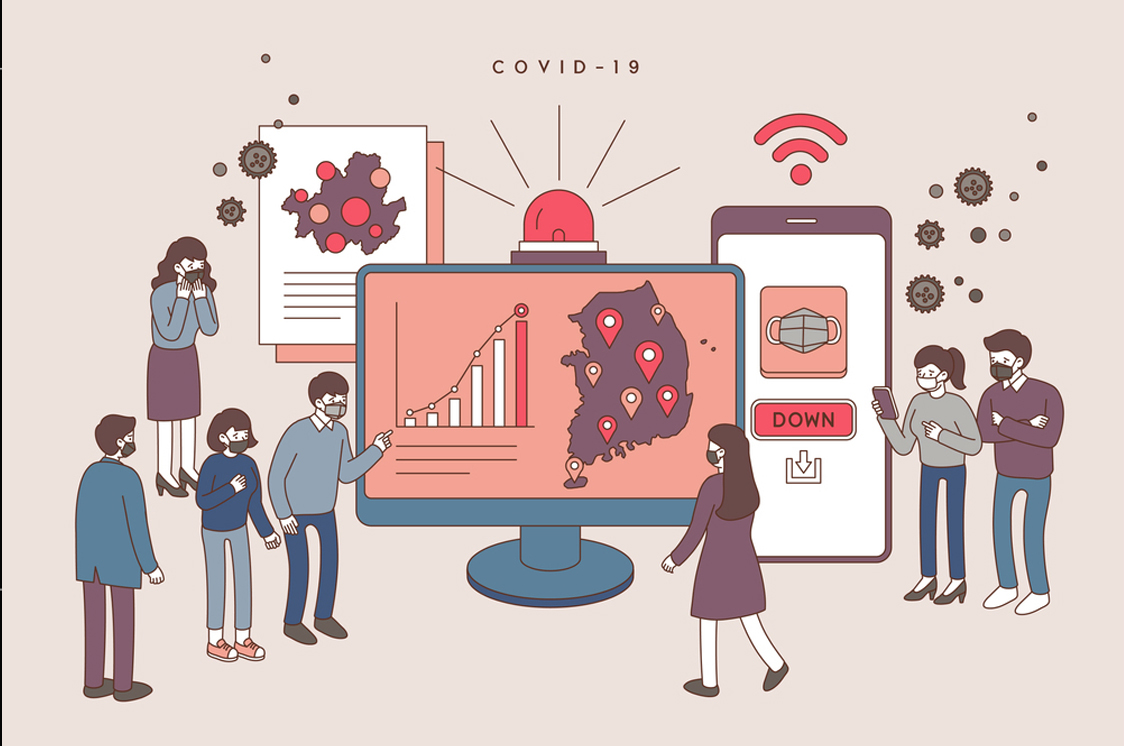
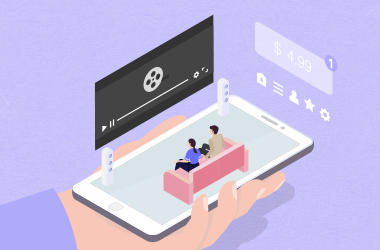
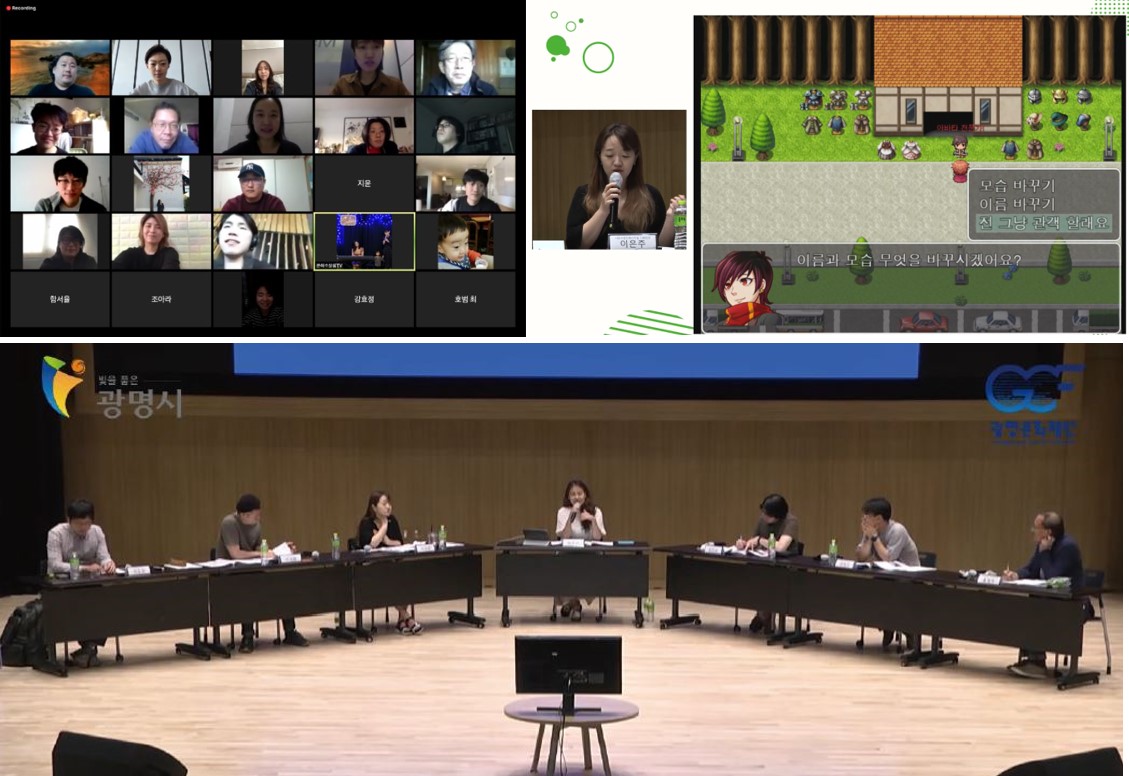
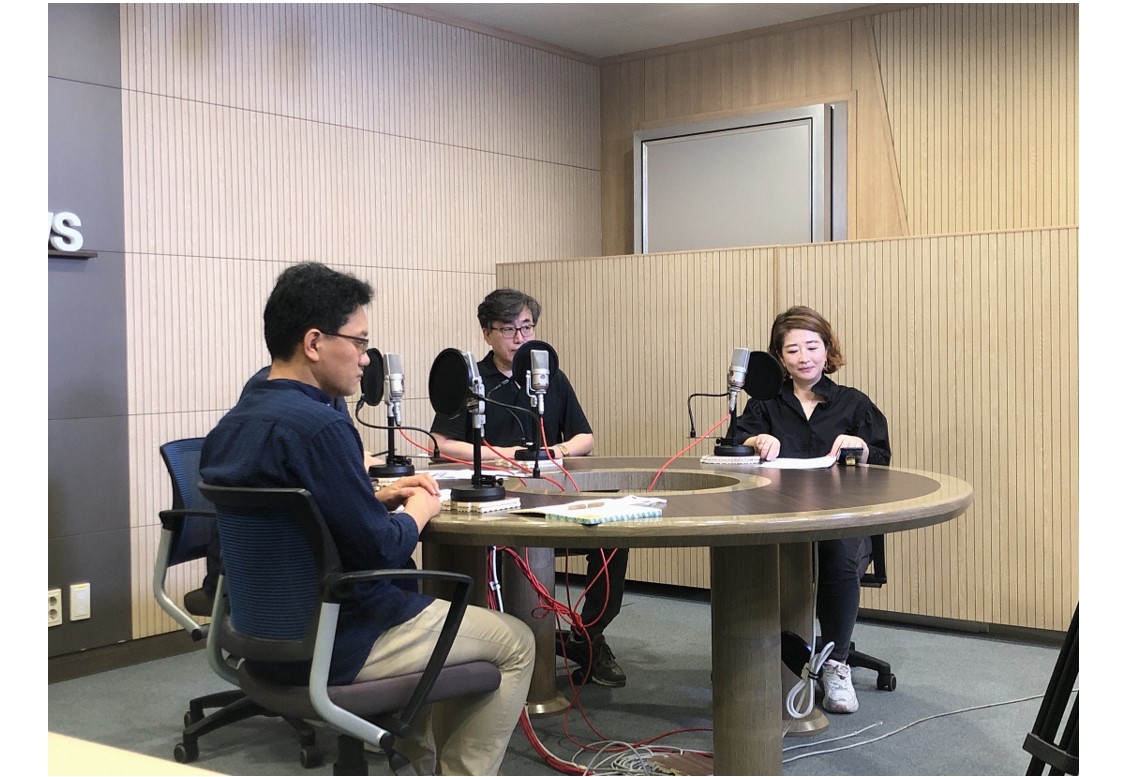
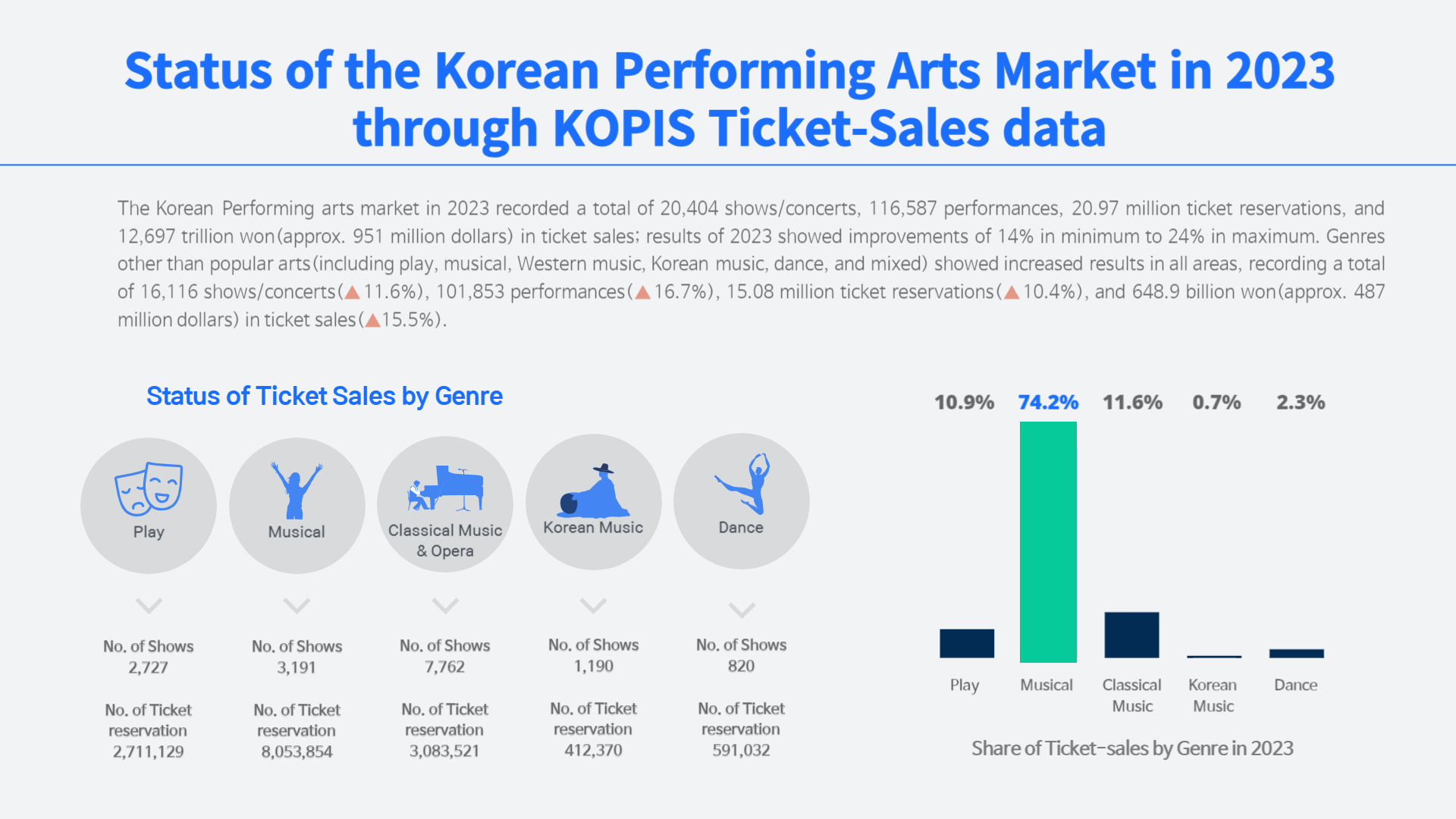
.jpg)
.jpg)
.jpg)
.jpg)











